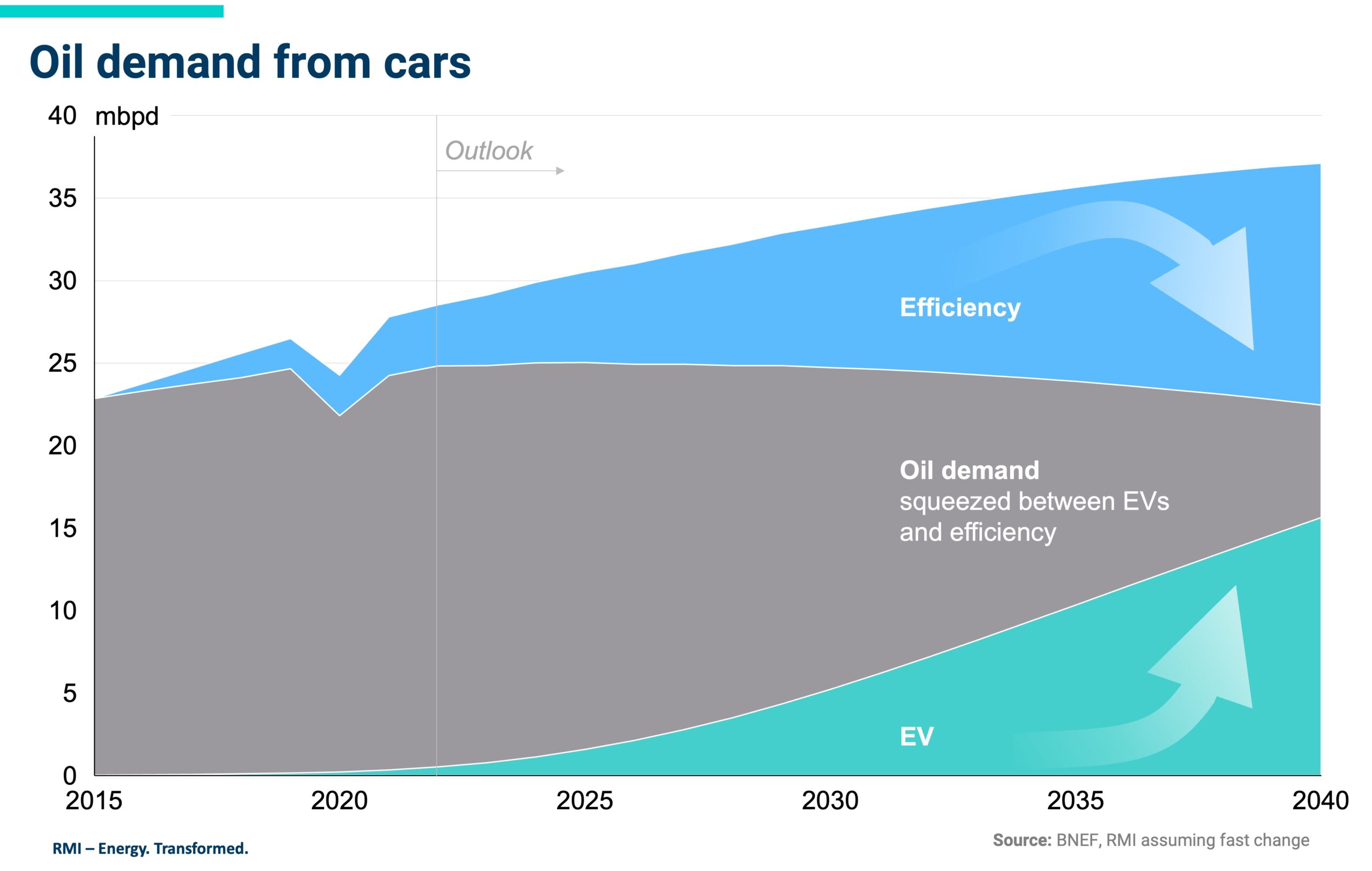
The EV Revolution in Five Charts and Not Too Many Numbers
The exponential growth of electric vehicles marks the end of the ICE age, putting half of oil demand at risk
The exponential growth of electric vehicles (EVs) means that ICE (internal combustion engine) sales and gasoline demand have already peaked and will be in freefall by 2030. So the end of the ICE age has begun, putting at risk half of global oil demand. This is the subject of RMI’s latest report: X-change: Cars.
1. EV Sales are growing exponentially up S-curves
EV sales growth is on an S-curve, and one country after another is taking a similar path. In broad terms it is taking about six years for countries to go from 1 percent to 10 percent market share and then another six years or so for leading countries to get to 80 percent. Globally, nearly one in five car sales in 2023 will be an EV, up from one in ten two years ago.

2. Forecasters keep underestimating the speed of EV growth
Each year forecasters revise their EV market share projections upwards, as battery prices fall on learning curves, consumer preferences shift to EVs, and leading countries figure out how to upgrade grids and deploy charging infrastructure. Consensus is currently clustered around an EV market share of 40 percent in 2030, but that would require growth to slow down dramatically. Such a slowdown is of course possible, but that is a contrarian position, not a default one.

3. The drivers of change are getting stronger
The main driver of change has been policy but now it is being joined by economics and the race for technology leadership. Continuity on learning curves implies battery prices will halve by 2030, enabling every major country and vehicle type to enjoy sticker price parity. Meanwhile, Chinese leadership has sparked a race to the top to dominate the EV technologies of the future.

4. Exponential growth will continue
Our S-curve modelling, based on the EV growth so far and the lessons of other technology shifts, suggests EV sales will grow at least four-fold by 2030, and make up between 62 percent and 86 percent of global car sales in 2030. EV sales could overtake ICE sales as early as 2026.

5. The growth of EVs pushes the ICE fleet and oil demand for cars into terminal decline
The growth of EVs up S-curves means that ICE sales peaked in 2017, gasoline demand peaked in 2019, and the ICE fleet will peak in the middle of the decade. Oil demand for cars will then be squeezed between continued efficiency gains and the rise of EVs. Once electric vehicles make up the vast majority of car sales, the world is around 15 years away from a quarter of oil demand falling to zero. And where cars lead, so a similar path is taken by 2-wheelers in the Global South and trucks in developed markets, meaning that half global oil demand from the road sector will soon be at risk.

The end of the ICE age is here, but we cannot rest on our laurels; challenges are many and we need to keep solving them. For motivations as diverse as costs, peace, air pollution, and climate, it is essential to make this fast transition faster.
